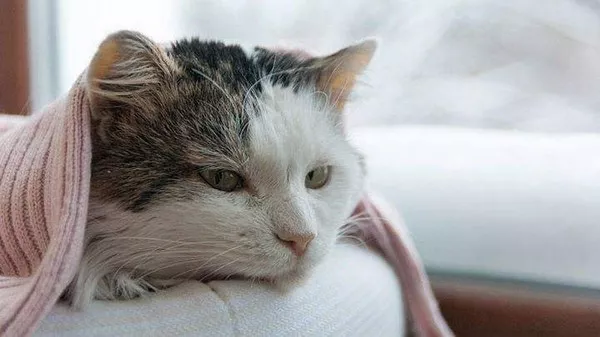The calico cat, with its mesmerizing patchwork of colors, has captivated cat fanciers for centuries. Their fur, a canvas of vibrant oranges, deep blacks, and pristine whites, seems to defy the typical rules of feline coloration. But beneath this artistic display lies a fascinating story of genetics, chance, and a touch of feline mystique.
The Chromosomal Dance of X and Y
To understand the calico cat’s unique coloration, we must delve into the realm of chromosomes, the microscopic structures that carry genetic information. Cats, like humans, possess two sex chromosomes: X and Y. Females inherit two X chromosomes (XX), while males inherit one X and one Y (XY). The genes responsible for coat color, including orange and black, reside on the X chromosome.
Here’s where the calico’s magic begins:
The Orange and Black Alleles: The gene for coat color comes in two main variants or alleles: orange (O) and black (o). A cat can have either OO (orange), oo (black), or Oo (a combination leading to tortoiseshell).
The X Factor: Females, with their two X chromosomes, have the possibility of carrying both the O and o alleles. However, only one X chromosome is active in each cell. This phenomenon, called X-inactivation, occurs randomly during early development.
A Patchwork of Expression: As cells divide and multiply, some express the O allele (leading to orange patches), while others express the o allele (leading to black patches). This mosaic of gene expression creates the calico’s distinctive tri-colored coat.
The Rarity of the Male Calico
The calico’s genetic dance makes them overwhelmingly female. For a male cat to be calico, it would need two X chromosomes and one Y chromosome (XXY), a rare genetic condition known as Klinefelter syndrome. These male calicos, though exceptional, often face health issues associated with the chromosomal abnormality.
Beyond Orange, Black, and White: The Shades of Calico
While orange, black, and white form the calico’s primary palette, the specific shades and patterns can vary significantly:
Diluted Calico: The expression of orange and black can be “diluted” by other genes, leading to softer hues like cream and blue-grey. These cats are sometimes referred to as “calimanco” or “dilute calico.”
Calico with White Spotting: Many calicos possess the white spotting gene, which introduces varying degrees of white fur into the mix. This gene operates independently of the orange and black color genes, leading to a wide range of patterns.
The Calico’s Place in History and Culture
Calico cats have left their paw prints across various cultures and historical periods:
Symbol of Luck: In many cultures, calicos are considered symbols of good luck and prosperity. Their rarity and striking appearance have contributed to this auspicious association.
Official State Cats: The calico cat holds the esteemed title of the official state cat of Maryland in the United States, a testament to their popularity and unique beauty.
Artistic Inspiration: From ancient Egyptian art to modern-day cartoons, calico cats have served as muses for artists, captivating audiences with their captivating color combinations.
Beyond Their Beauty: The Calico Personality
While genetics dictates their coat color, calicos are known for having distinct personalities. Often described as spirited, independent, and affectionate, they possess a certain “cattitude” that sets them apart. However, it’s important to remember that each cat is an individual, and personality traits can vary widely.
Appreciating the Calico Cat
The calico cat is a testament to the fascinating interplay of genetics and chance, a living masterpiece painted by nature’s brush. Their captivating colors and spirited personalities make them cherished companions and a source of endless fascination. Whether you’re drawn to their vibrant hues, their independent spirit, or the touch of luck they’re said to bring, there’s no denying the unique charm of the calico cat.
Related Topics:























